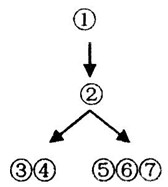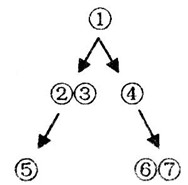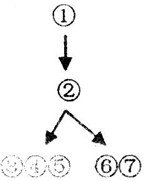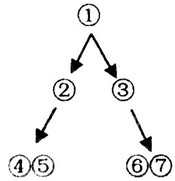
科目: 来源:福建省模拟题 题型:阅读理解
查看答案和解析>>
科目: 来源:广东省模拟题 题型:阅读理解
查看答案和解析>>
科目: 来源:安徽省模拟题 题型:阅读理解
查看答案和解析>>
科目: 来源:山东省模拟题 题型:阅读理解
查看答案和解析>>
科目: 来源:江苏模拟题 题型:阅读理解
 B.
B. 
 D.
D. 
查看答案和解析>>
科目: 来源:江苏模拟题 题型:阅读理解
| 任务型阅读。请认真阅读下列短文,并根据所读内容在文章后表格中的空格里填人一个最恰当的 单词。注意:每个空格只填1个单词。 | ||||||||||||
| Brief History of the World's Fair World's Fairs originated in the French tradition of national exhibitions, a tradition that ended with the French Industrial Exposition of 1844 held in Paris. It was soon followed by other natioml exhibitions in continemal Europe, and finalIy came to London where the first real international exhibition was held. Since their start in 1851, the character of world expositions has developed gradually. Three eras (年代) can be distinguished: the era of industrialization, the era of cultural exchange, and the era of nation branding. Industrialization (185l-l938) The first era could be called the era of industrialization and covered the period from 1851 to 1938. In these days, world expositions were especially focused on trade and famous for the display of technological inventions and advancements. World expositions were the platform where the state of the art in science and technology from around the world was brought together. Inventions such as the telephone were first presented during this era. An important part of the image of World's Fairs stems from this first era. Cultural exchange (1939-1991) The 1939 New York World's Fair and the 1949 Stockholm World's Fair were different from the original focus of the expositions. From then on, World's Fairs became more strongly based on a specific theme of cultural significance, and began to address issues of humankind. Technology and inventions remained important, but no longer as the principal subjects of the Fair. Cross-cultural dialogue and the exchange of solutions became defining elements of the expos. It was also during this timr, specifically in the 196os, that BIE organizers started calling World's Fairs "Expo's". Nation branding (1992-present) From Expo'88 in Brisbanc onwards, countries started to use World Expositions more widely and more strongly as a platform to improve their national images through their pavilions (展馆). Finland, Japan, Canada, France and Spain are cases in point. A large study by Tjaco Walvis called "Expo 2000 Hanover in Numbers" showed that improving national images was the primary participation goal for 73% of the countries at Expo 2000. In a world where a strong national image is a key asset (财产), pavilions became advertising campaigns, and the Expo a channel for nation branding. As well as cultural and symbolic reasons, organizing countries (and the cities and regions hosting them) also use the world exposition to brand themselves. Future expositions 2017 will see a recognized exposition Bidding may begin as early as 2012 for this smaller-sized exposition. Already, Edmonton, Alberta and Canada have voted to go on with the second stage of putting together a bid for Edmonton EXPO 2017. 2020 will see a registered category of exposition. Bidding may begin as early as 2011 for this larger sized exposition. There are citizen efforts in American cities with the intention of bringing a World's Fair back to the United States. | ||||||||||||
|
查看答案和解析>>
科目: 来源:福建省模拟题 题型:填空题
查看答案和解析>>
科目: 来源:湖南省模拟题 题型:阅读理解
查看答案和解析>>
科目: 来源:湖南省模拟题 题型:阅读理解
查看答案和解析>>
科目: 来源:吉林省模拟题 题型:阅读理解
查看答案和解析>>
湖北省互联网违法和不良信息举报平台 | 网上有害信息举报专区 | 电信诈骗举报专区 | 涉历史虚无主义有害信息举报专区 | 涉企侵权举报专区
违法和不良信息举报电话:027-86699610 举报邮箱:58377363@163.com